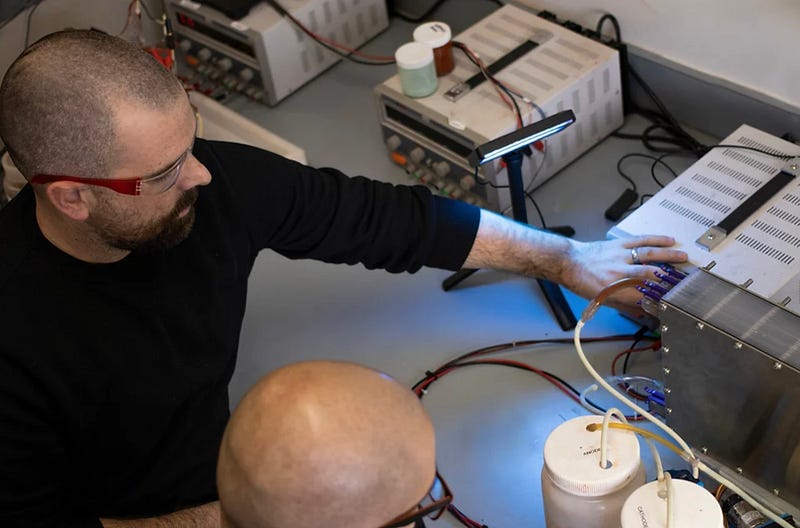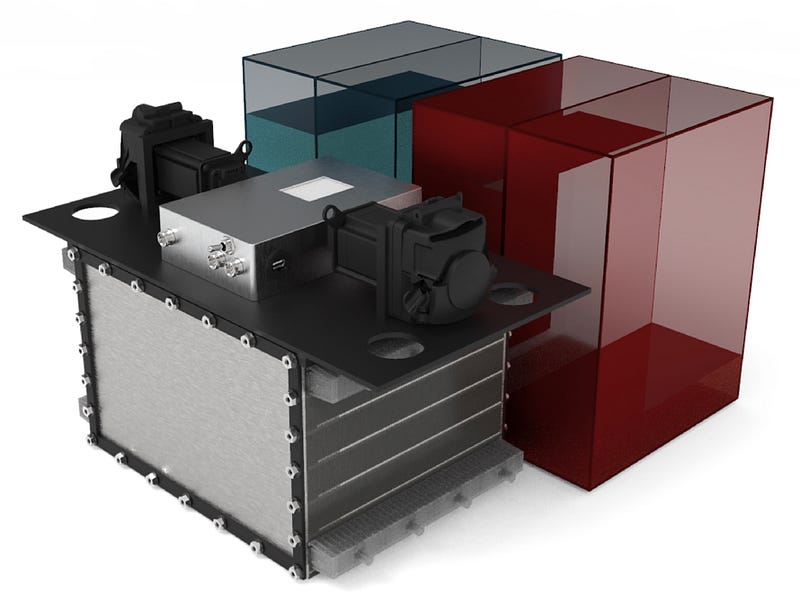Revolutionizing Electric Vehicles: The Future of Flow Batteries
Written on
Chapter 1: The Current State of Electric Vehicles
The electric vehicle (EV) industry is rapidly evolving, yet significant challenges remain. Even Tesla, widely regarded as a leader in this market, grapples with various issues, including prolonged charging times, fire hazards, limited driving ranges, supply chain disruptions, high costs, battery wear, and environmental concerns associated with production. While Teslas are impressive, if we aspire to transition fully to electric vehicles and achieve our climate objectives, improvement is essential. Fortunately, with support from NASA and DARPA, Influit has created an innovative flow battery that addresses these concerns comprehensively. What exactly is this battery, and could it change the landscape of transportation?
Section 1.1: Understanding Flow Battery Technology
Unlike the conventional lithium-ion batteries used in our current electric vehicles, smartphones, and laptops, this new battery operates on a distinct principle. Flow batteries store energy in liquid form rather than in solid or gel states. Typically, these systems consist of two liquids—positive and negative—contained in large tanks. The liquids are pumped to a cell stack (often referred to as a current collector), allowing electric charge to flow through a circuit and power it.
Flow batteries have been in existence for some time, boasting remarkable benefits. They offer a low cost per kilowatt-hour of storage, surpassing almost any other type of battery. Additionally, their lifespan is nearly indefinite since the liquid and cell stacks do not degrade under load. Furthermore, they are exceptionally safe, as they do not pose a fire risk. However, their energy density is relatively low, around 25-35 watt-hours per kilogram, resulting in a weight significantly greater than that of comparable lithium-ion batteries. This limitation has confined their use primarily to industrial applications, preventing their adoption in electric vehicles until now.

Section 1.2: Influit's Innovative Solution
Influit has developed a groundbreaking solution to the low energy density challenge. Traditionally, flow batteries utilize ionic salts dissolved in water, which limits their energy capacity. Influit's breakthrough involves the creation of nanoparticles that perform the same function as these salts but are suspended rather than dissolved in the liquid. This method allows for a higher concentration of charge-holding materials, significantly enhancing energy density without compromising flow characteristics.
The results are impressive. Influit's first-generation battery pack achieves an energy density of up to 550 watt-hours per kilogram, effectively doubling the energy density of the best lithium-ion batteries available today. This pack is also 23% more volumetrically efficient than traditional lithium-ion options and is priced at half the cost per kilowatt-hour of capacity. For example, if this battery were installed in a Tesla Model 3 Long Range, it could provide a capacity of 150 kilowatt-hours, maintaining the same weight while extending the vehicle's range to an impressive 668 miles—all without increasing the vehicle's price. Such performance could revolutionize the EV market.

Chapter 2: Charging and Safety Advantages
Influit's battery technology not only excels in energy density and cost but may also be the fastest charging solution available. Users can charge this battery like any standard lithium-ion pack, but they can also "refuel" it by replacing the depleted liquids with newly charged ones. This process can be completed in the same time it takes to refuel a gasoline vehicle.
The first video titled "Solid State Batteries - FINALLY powering electric vehicles in 2024!" dives into the advancements in battery technology, including the role of solid-state batteries in enhancing electric vehicles.
This unique refueling method means drivers can carry a portable container to quickly boost their vehicle's range. Moreover, setting up these refueling stations is straightforward, as they only need to recharge the used flow battery liquids for the next vehicle, eliminating the complexities of conventional fueling infrastructure.
Section 2.1: Safety and Environmental Considerations
Influit’s packs retain all the inherent safety features of flow batteries, ensuring longevity and a reliable supply chain while being more environmentally friendly. In case of an accident, an Influit-powered EV is less likely to experience a battery fire, unlike traditional lithium-ion batteries. Additionally, these batteries can last over a million miles without significant degradation. They also do not rely on materials sourced from environmentally harmful mining processes, mitigating risks related to geopolitical instability and ensuring stable pricing and supply.

Chapter 3: The Future of Electric Vehicles
Given these remarkable features, it's no surprise that NASA and DARPA have invested in Influit. These organizations require safe, energy-dense batteries with rapid charging capabilities for their electric aviation and space exploration initiatives. Both safety and energy density are critical factors in these fields. However, Influit's technology will not only be available for government projects; it is expected to be accessible to commercial enterprises for use in their electric vehicles.
The second video titled "Why NASA is Building a Solid State Battery" explores the significance of advanced battery technologies in various applications, including space exploration and electric vehicles.
Imagine a future where consumers can purchase a $50,000 EV with over 600 miles of range, capable of charging in a minute, and equipped with a battery that remains reliable over time. Alternatively, consider a $20,000 EV offering 300 miles of range and the same fast charging and durability. This scenario is on the horizon, and it promises a smaller ecological footprint.
In conclusion, will Influit's flow battery transform the world? It would be surprising if it does not! This technology significantly outperforms existing options. The only remaining question is whether Influit can meet the demand when they launch this innovative solution into the market.